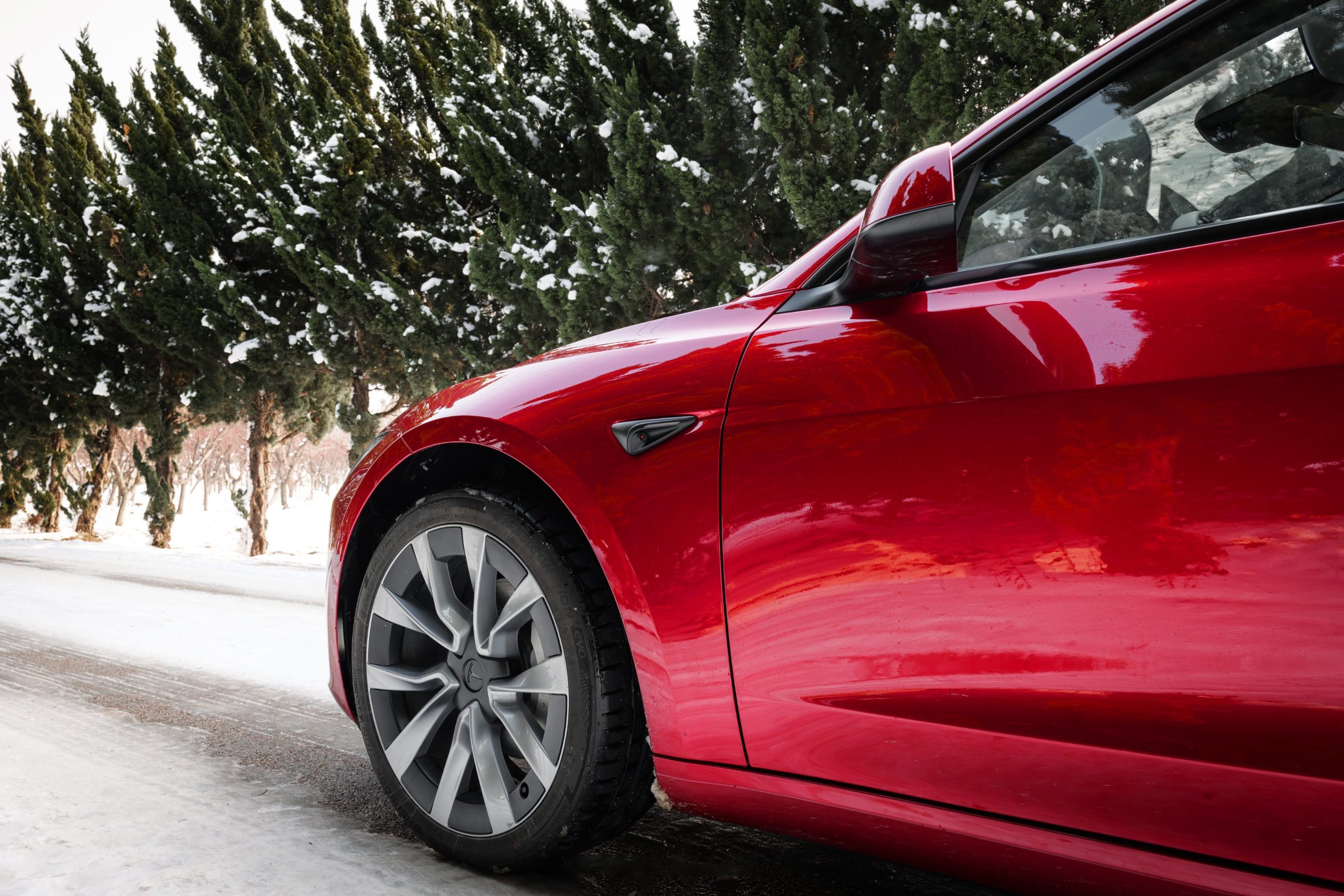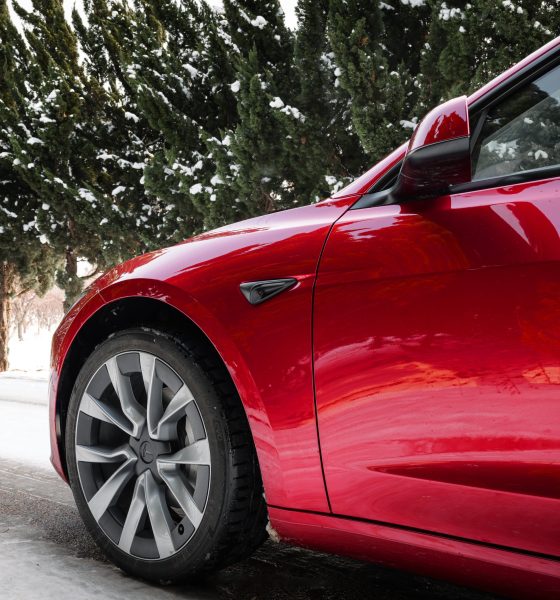There were a number of notable events that transpired in the electric vehicle sector in the past few days. Tesla rolled out a minor $1,000 limited-time discount for the Model Y crossover until the end of February. And this Sunday, BMW, Volkswagen, and KIA aired their respective advertisements for the BMW i5, VW ID.Buzz, and the KIA EV9 at Super Bowl LVIII.
The Super Bowl is the United States’ biggest sporting event, reaching nearly 100 million people every year since Super Bowl 44 in 2010, as per ratings agency Nielsen. It is then no surprise that ad spots for the premier sporting event are sold at a premium, with Automotive News noting that a 30-second advertisement for this year’s Super Bowl costs about $7 million on average.
Now, $7 million is definitely not a small amount, but it does help a company reach 100 million people. That’s invaluable, and likely well worth it for automakers looking to highlight their electric vehicle offerings. This was evident in BMW’s star-studded ad with actor Christopher Walken, Volkswagen’s nostalgic advertisement for the ID.Buzz, and KIA’s heartwarming commercial for the EV9. And as per Wall Street veteran and Tesla bull Gary Black, Tesla could have easily benefitted from a Super Bowl ad this year.
At $7M for a 30 second Super Bowl ad, $TSLA would have to sell 875 incremental cars (@$8k gross profit per car) to justify the cost of the ad. And the follow up interest from TSLA paying for a Super Bowl ad would be huge. Instead $TSLA cuts price by $1,000 per Model Y in the US… https://t.co/ZrqxUpRCcB— Gary Black (@garyblack00) February 12, 2024
As explained by Black in a post on X, the social media platform formerly known as Twitter, a $7 million Super Bowl ad for Tesla would result in massive follow-up interest in the electric vehicle maker. Black also highlighted that at $7 million, Tesla would only have to sell 875 incremental cars at $8,000 gross profit per unit to justify the cost of a 30-second Super Bowl advertisement.
In comparison, Tesla’s $1,000 discount for the Model Y, which is generally unknown to conventional car buyers outside X and the EV community, will cost Tesla about $40 million, Black estimated. What’s worse is that avid Tesla critic Dan O’Dowd, who is on a crusade to ban Full Self-Driving on public roads, is paying for two Super Bowl ads. Thus, not only will Super Bowl viewers not see an ad supporting Tesla during the premier sporting event. They will instead see two ads encouraging them to boycott the company’s products.
Do you think @Tesla spending $7 million on a 30 second Super Bowl ad would be a good investment for the company?
Explain your reasoning below.— Sawyer Merritt (@SawyerMerritt) February 11, 2024
What is interesting is that Tesla has a ton of advertisements that could have worked for the Super Bowl as well. Tesla’s Cybertruck commercials alone would be very interesting, such as the company’s 60-second “all-features” ad or the vehicle’s dedicated Basecamp advertisement. One could even argue that some fan-made Tesla commercials that have been created by enthusiasts over the years are good enough for such an event.
It was thus unsurprising that numerous EV fans and TSLA investors supported Black’s suggestion. After all, a good number of car buyers are still very unfamiliar with Tesla’s vehicles, such as the fact that they start below $40,000, that they are the safest cars on the road, or that they are the most American-made, among others. This was quite evident in a poll that was posted on X which asked users if Tesla would benefit from a Super Bowl ad. While those who support and those who do not support the idea are pretty much equal, one cannot deny the fact that the voices calling for Tesla to advertise are getting notably louder.
Check out BMW, Volkswagen, and KIA’s EV ads for Super Bowl LVIII below.
Don’t hesitate to contact us with news tips. Just send a message to simon@teslarati.com to give us a heads up.

News
Tesla China delivery centers look packed as 2025 comes to a close
Needless to say, it appears that Tesla China seems intent on ending 2025 on a strong note.

Tesla’s delivery centers in China seem to be absolutely packed as the final days of 2025 wind down, with photos on social media showing delivery locations being filled wall-to-wall with vehicles waiting for their new owners.
Needless to say, it appears that Tesla China seems intent on ending 2025 on a strong note.
Full delivery center hints at year-end demand surge
A recent image from a Chinese delivery center posted by industry watcher @Tslachan on X revealed rows upon rows of freshly prepared Model Y and Model 3 units, some of which were adorned with red bows and teddy bears. Some customers also seem to be looking over their vehicles with Tesla delivery staff.
The images hint at a strong year-end push to clear inventory and deliver as many vehicles as possible. Interestingly enough, several Model Y L vehicles could be seen in the photos, hinting at the demand for the extended wheelbase-six seat variant of the best-selling all-electric crossover.
Strong demand in China
Consumer demand for the Model Y and Model 3 in China seems to be quite notable. This could be inferred from the estimated delivery dates for the Model 3 and Model Y, which have been extended to February 2026 for several variants. Apart from this, the Model Y and Model 3 also continue to rank well in China’s premium EV segment.
From January to November alone, the Model Y took China’s number one spot in the RMB 200,000-RMB 300,000 segment for electric vehicles, selling 359,463 units. The Model 3 sedan took third place, selling 172,392. This is quite impressive considering that both the Model Y and Model 3 are still priced at a premium compared to some of their rivals, such as the Xiaomi SU7 and YU7.
With delivery centers in December being quite busy, it does seem like Tesla China will end the year on a strong note once more.
News
Tesla Giga Berlin draws “red line” over IG Metall union’s 35-hour week demands
Factory manager André Thierig has drawn a “red line” against reducing Giga Berlin’s workweek to 35 hours, while highlighting that Tesla has actually increased its workers’ salaries more substantially than other carmakers in the country.

Tesla Giga Berlin has found itself in a new labor dispute in Germany, where union IG Metall is pushing for adoption of a collective agreement to boost wages and implement changes, such as a 35-hour workweek.
In a comment, Giga Berlin manager André Thierig drew a “red line” against reducing Giga Berlin’s workweek to 35 hours, while highlighting that Tesla has actually increased its workers’ salaries more substantially than other carmakers in the country.
Tesla factory manager’s “red line”
Tesla Germany is expected to hold a works council election in 2026, which André Thierig considers very important. As per the Giga Berlin plant manager, Giga Berlin’s plant expansion plans might be put on hold if the election favors the union. He also spoke against some of the changes that IG Metall is seeking to implement in the factory, like a 35-hour week, as noted in an rbb24 report.
“The discussion about a 35-hour week is a red line for me. We will not cross it,” Theirig said.
“(The election) will determine whether we can continue our successful path in the future in an independent, flexible, and unbureaucratic manner. Personally, I cannot imagine that the decision-makers in the USA will continue to push ahead with the factory expansion if the election results favor IG Metall.”
Giga Berlin’s wage increase
IG Metall district manager Jan Otto told the German news agency DPA that without a collective agreement, Tesla’s wages remain significantly below levels at other German car factories. He noted the company excuses this by referencing its lowest pay grade, but added: “The two lowest pay grades are not even used in car factories.”
In response, Tesla noted that it has raised the wages of Gigafactory Berlin’s workers more than their German competitors. Thierig noted that with a collective agreement, Giga Berlin’s workers would have seen a 2% wage increase this year. But thanks to Tesla not being unionized, Gigafactory Berlin workers were able to receive a 4% increase, as noted in a CarUp report.
“There was a wage increase of 2% this year in the current collective agreement. Because we are in a different economic situation than the industry as a whole, we were able to double the wages – by 4%. Since production started, this corresponds to a wage increase of more than 25% in less than four years,” Thierig stated.
News
Tesla is seeing a lot of momentum from young Koreans in their 20s-30s: report
From January to November, young buyers purchased over 21,000 Teslas, putting it far ahead of fellow imported rivals like BMW and Mercedes-Benz.

Tesla has captured the hearts of South Korea’s 20s-30s demographic, emerging as the group’s top-selling imported car brand in 2025. From January to November, young buyers purchased over 21,000 Teslas, putting it far ahead of fellow imported rivals like BMW and Mercedes-Benz.
Industry experts cited by The Economist attributed this “Tesla frenzy” to fandom culture, where buyers prioritize the brand over traditional car attributes, similar to snapping up the latest iPhone.
Model Y dominates among young buyers
Data from the Korea Imported Automobile Association showed that Tesla sold 21,757 vehicles to the 20s-30s demographic through November, compared to BMW’s 13,666 and Mercedes-Benz’s 6,983. The Model Y led the list overwhelmingly, with variants like the standard and Long Range models topping purchases for both young men and women.
Young men bought around 16,000 Teslas, mostly Model Y (over 15,000 units), followed by Model 3. Young women followed a similar pattern, favoring Model Y (3,888 units) and Model 3 (1,083 units). The Cybertruck saw minimal sales in this group.
The Model Y’s appeal lies in its family-friendly SUV design, 400-500 km range, quick acceleration, and spacious cargo, which is ideal for commuting and leisure. The Model 3, on the other hand, serves as an accessible entry point with lower pricing, which is valuable considering the country’s EV subsidies.
The Tesla boom
Experts described Tesla’s popularity as “fandom culture,” where young buyers embrace the brand despite criticisms from skeptics. Professor Lee Ho-geun called Tesla a “typical early adopter brand,” comparing purchases to iPhones.
Professor Kim Pil-soo noted that young people view Tesla more as a gadget than a car, and they are likely drawn by marketing, subsidies, and perceived value. They also tend to overlook news of numerous recalls, which are mostly over-the-air software updates, and controversies tied to the company.
Tesla’s position as Korea’s top import for 2025 seems secured. As noted by the publication, Tesla’s December sales figures have not been reported yet, but market analysts have suggested that Tesla has all but secured the top spot among the country’s imported cars this year.










